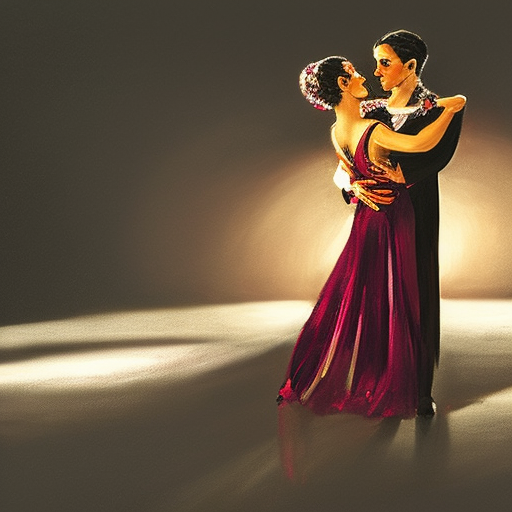Tango: A Passionate Dance from Argentina
Tango is a passionate and sensual dance that originated in the late 19th century in the working-class neighborhoods of Buenos Aires, Argentina. It is a dance that expresses a range of emotions, from longing and desire to melancholy and nostalgia. Tango has since become a popular dance style worldwide, known for its intricate footwork, dramatic movements, and intense connection between partners.
Origins and Influences
The origins of tango can be traced back to the fusion of various cultural influences in Buenos Aires. It is believed to have emerged from a mix of African, European, and indigenous Argentine music and dance styles. The African influence can be seen in the rhythmic patterns and syncopated beats, while the European influence is evident in the formal structure and melodic elements.
Early Development
Tango initially gained popularity among the lower classes in the suburbs of Buenos Aires. It was danced in the courtyards of tenement houses and in the crowded dance halls known as “milongas.” Tango music was played by small ensembles, typically featuring a guitar, violin, and flute. The lyrics of tango songs often depicted the struggles and joys of everyday life in the city.
Golden Age of Tango
In the early 20th century, tango experienced a period of rapid growth and refinement. This era, known as the “Golden Age of Tango,” saw the emergence of legendary tango orchestras and the rise of tango as a popular dance worldwide. Orchestras led by musicians such as Carlos Gardel and Juan D’Arienzo played a crucial role in shaping the sound of tango during this time.
Tango in the Ballrooms
During the Golden Age, tango moved from the streets and dance halls to the grand ballrooms of Buenos Aires. These ballrooms, known as “salones,” were elegant venues where the upper classes gathered to dance tango. The dance became more formalized and refined, with a focus on technique and elegance. Tango also spread to Europe and the United States, where it became a sensation in the 1920s and 1930s.
Evolution and Modern Tango
In the mid-20th century, tango underwent a period of decline in popularity in Argentina. However, it experienced a revival in the 1980s and 1990s, thanks to the efforts of a new generation of tango musicians and dancers. This revival, known as the “Tango Nuevo,” brought a fresh and innovative approach to the dance, incorporating elements from jazz and contemporary dance styles.
Tango Today
Today, tango continues to captivate audiences around the world. It is celebrated in international tango festivals and competitions, where dancers showcase their skills and creativity. Tango music, with its distinctive sound and emotional depth, remains an integral part of Argentine culture. Tango has also influenced other dance styles, such as ballroom tango and Argentine tango, which have their own unique characteristics and variations.
Key Features of Tango
- Connection: Tango is known for its intense connection between partners. The dancers maintain a close embrace and communicate through subtle body movements.
- Footwork: Tango footwork is intricate and precise, with quick and precise movements. Dancers often execute complex patterns and turns.
- Emotion: Tango is a dance that expresses a range of emotions, from passion and desire to sadness and longing. Dancers use their body language and facial expressions to convey these emotions.
- Improvisation: Tango allows for improvisation and creativity. Dancers interpret the music and respond to each other’s movements in the moment.
In Conclusion
Tango is a dance that embodies the spirit of Argentina, with its passionate and expressive movements. From its humble origins in the streets of Buenos Aires to its global popularity today, tango has captivated audiences with its beauty and emotion. Whether danced in the milongas of Argentina or the ballrooms of Europe, tango continues to be a powerful and enchanting art form.












